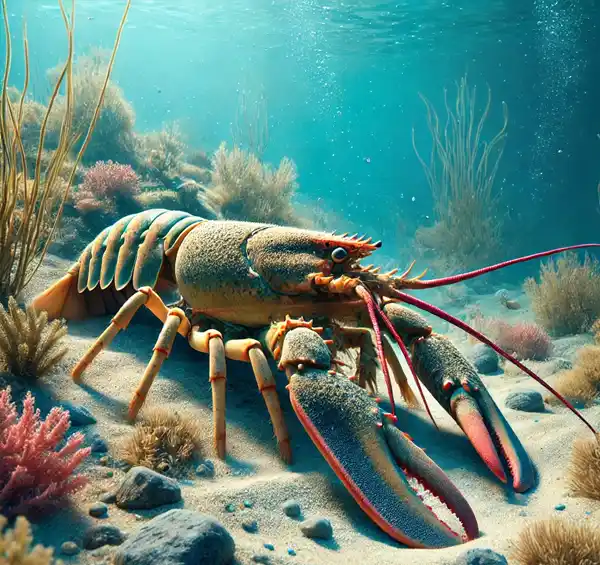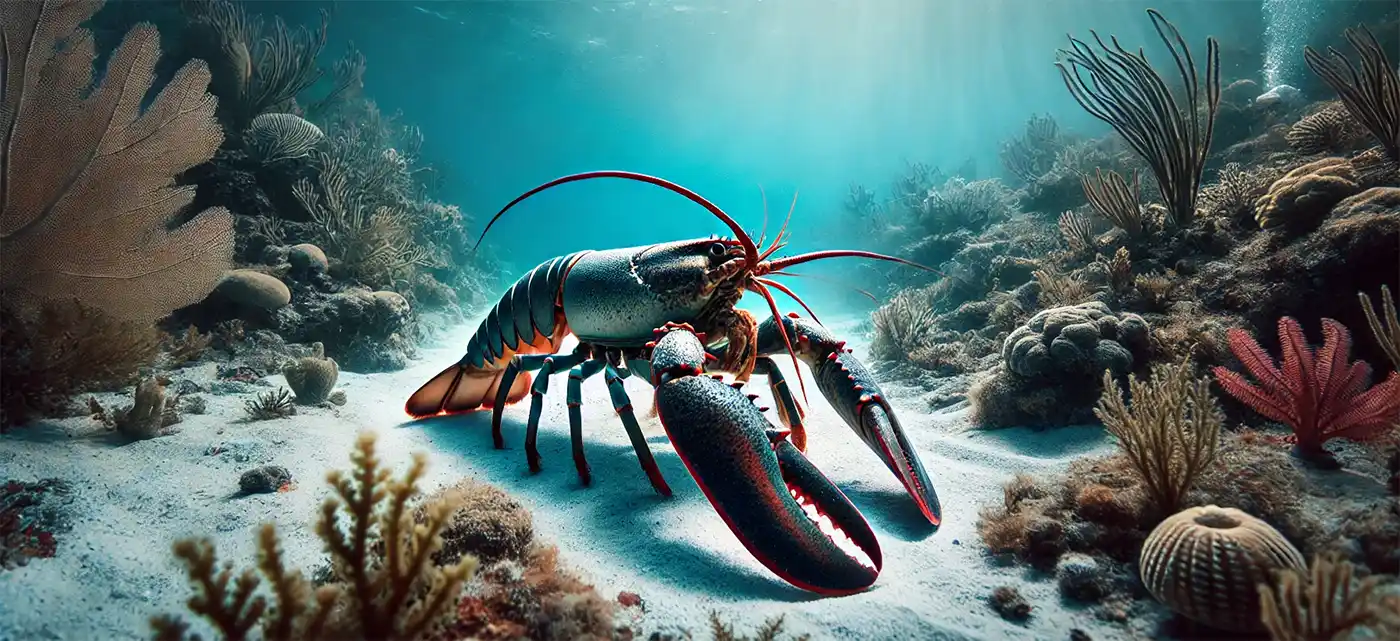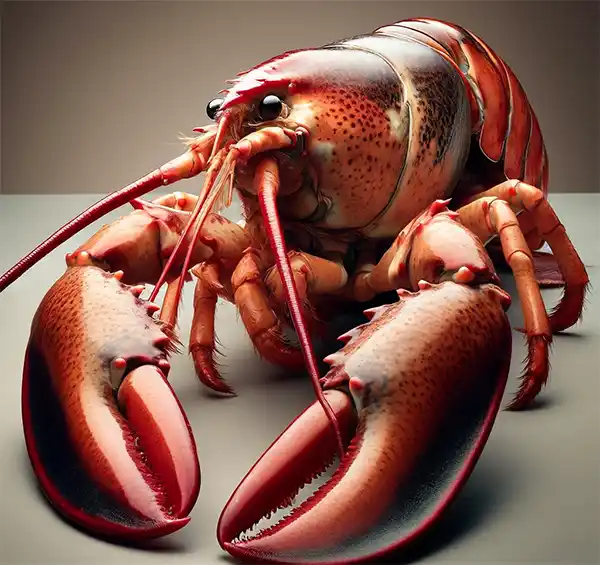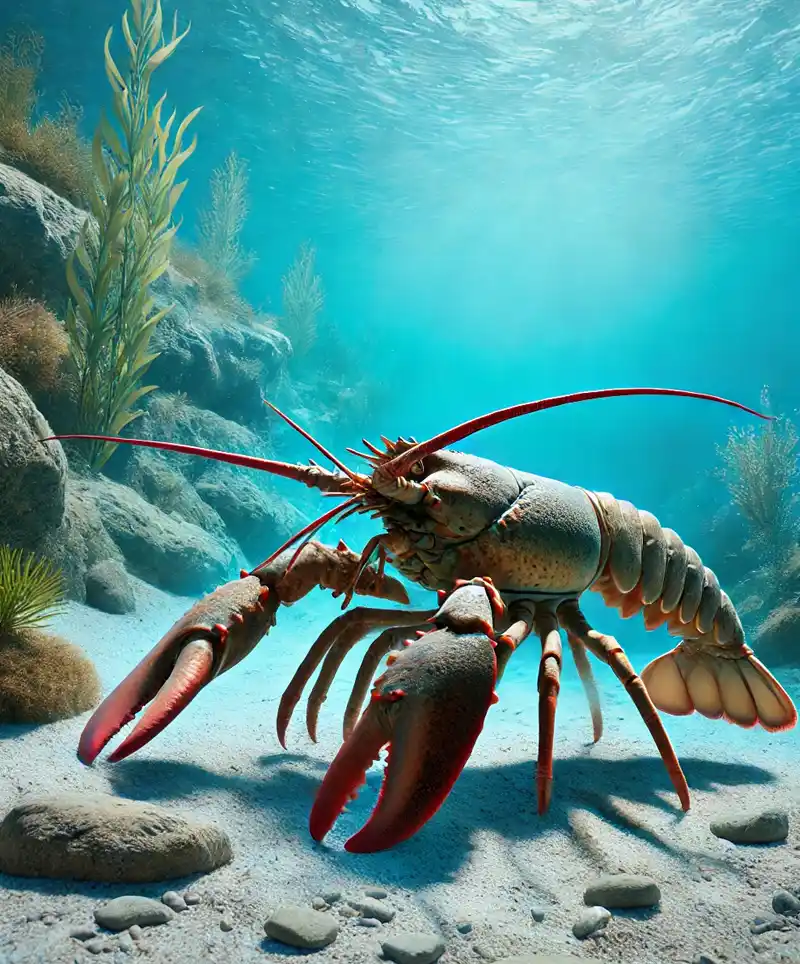A Crustacean Celebration!
Let’s be honest—when you hear the word "lobster," your mind probably conjures images of fine dining, bibs that no one looks cool in, and buttery indulgence. But National Lobster Day, celebrated on both June 15 and September 25, is about more than just gourmet feasts. These two special dates honor the lobster’s journey from ocean floor to fancy plate and celebrate the hardworking fishermen and women who bring this delectable crustacean to our tables. Whether you’re cracking open lobster claws in the summer or indulging in a fall seafood feast, there's plenty of lobster love to go around twice a year!
 So, crack open the shell, grab some melted butter, and let’s dive into the fascinating world of lobsters!
So, crack open the shell, grab some melted butter, and let’s dive into the fascinating world of lobsters!
A Crusty History of Lobster
Lobsters weren’t always the luxurious seafood dish we know today. In fact, during the colonial period in America, they were considered “poor man’s food” and often fed to prisoners, servants, and the unlucky. Can you imagine being fed lobster so often that you’d actually complain about it? Today, that’s like complaining about having too much chocolate cake (an unlikely scenario for most of us).
Lobsters were so abundant along the East Coast of North America that early colonists used them as fertilizer for their crops. It wasn’t until the late 19th century, when transportation methods improved, and lobsters could be shipped to cities that their reputation took a fancy turn. From peasant food to delicacy, the lobster has definitely had a glow-up.
The Gym Rats of the Sea
Lobsters are tough little creatures. They can live up to 50 years and continue to grow throughout their entire lives. That’s right—unlike humans, who peak at some point (usually during high school gym class), lobsters just keep getting bigger and stronger. These crustaceans have a remarkable ability to regenerate lost limbs, which comes in handy when they engage in the occasional claw duel. Talk about resilience!
They also have two types of claws: the crusher (which is, as you might guess, for crushing things) and the cutter (for precision snipping). It’s like having a Swiss army knife built into their bodies, making them one of the ocean’s most formidable predators. Well, until they meet a lobster trap, that is.
The Lobster’s Love Life
Lobster romance is, shall we say, complicated. For starters, lobsters mate right after the female molts, shedding her shell to grow a new one. But before this moment, the female has to basically woo the male by spraying a little pheromone love potion into his den. Once the pheromones have done their job, the female moves in temporarily, and the magic happens. Afterward, they part ways, with no second date on the horizon. It’s a short-lived affair, but hey, it works for them!

The Great Debate on Cooking Methods
Here’s where things get spicy—lobster cooking methods are a hot topic (pun intended). Some say boiling is the only way to go, while others swear by steaming to preserve that sweet, tender meat. Then, of course, there’s the great debate on whether to add lobster to dishes like pasta or simply enjoy it au naturel with a pool of melted butter.
 But let’s not forget the ethical debate around lobster cooking. Traditional methods call for boiling lobsters alive, which has led to discussions on whether this practice is humane. In some places, like Switzerland, it’s now illegal to boil a lobster without stunning it first. While this is a serious conversation, let’s just say that lobsters probably aren’t fans of any cooking method.
But let’s not forget the ethical debate around lobster cooking. Traditional methods call for boiling lobsters alive, which has led to discussions on whether this practice is humane. In some places, like Switzerland, it’s now illegal to boil a lobster without stunning it first. While this is a serious conversation, let’s just say that lobsters probably aren’t fans of any cooking method.
Fun Lobster Facts to Crack You Up
- Lobsters aren’t naturally red: They only turn that signature bright red after being cooked. In the wild, they’re usually a mix of brown, green, and orange, with rare blue lobsters making up about one in two million.
- Lobsters used to be “served” as fertilizer: Early American colonists thought they were so worthless, they fed them to prisoners and even used them as crop fertilizer. (We bet today’s prisoners would love that!)
- Lobster bladders are in their heads: And they use them to communicate with each other. Nothing says “get out of my way” quite like shooting a stream of pee from your face.
- Lobsters taste with their legs: Yes, that’s right. Lobsters can detect food using sensory hairs on their legs. Imagine being able to taste your food with your feet—dinner parties would never be the same.
The Great Lobster Bake
On National Lobster Day, you don’t need to head to a high-end restaurant to enjoy this succulent seafood. Instead, why not organize a lobster bake with friends and family? Traditional lobster bakes involve steaming the lobsters in seaweed over hot coals, often alongside clams, potatoes, and corn. Of course, if you don’t live near the ocean, your backyard grill will work just fine. The important part is gathering with loved ones and indulging in this delightful treat.
If cooking lobster feels a little too intense (we get it—there’s that whole alive-before-cooking thing), you can always order lobster rolls from a nearby seafood shack. These buttery, toasted rolls filled with chunks of tender lobster meat are a simple yet delicious way to honor the day.
National Lobster Day is about more than just eating a fancy meal—it’s a celebration of the rich history, science, and industry behind one of the ocean’s most prized inhabitants. From their humble beginnings as “trash food” to their status as a luxury delicacy, lobsters have clawed their way into our hearts (and stomachs).
So, whether you’re dining on a buttery lobster tail or just learning more about these fascinating creatures, take a moment on September 25 to appreciate the lobster’s long journey from the sea to your plate. And don’t forget the bib—you’re going to need it!
Please Share our Content






 So, crack open the shell, grab some melted butter, and let’s dive into the fascinating world of lobsters!
So, crack open the shell, grab some melted butter, and let’s dive into the fascinating world of lobsters!
 But let’s not forget the ethical debate around lobster cooking. Traditional methods call for boiling lobsters alive, which has led to discussions on whether this practice is humane. In some places, like Switzerland, it’s now illegal to boil a lobster without stunning it first. While this is a serious conversation, let’s just say that lobsters probably aren’t fans of any cooking method.
But let’s not forget the ethical debate around lobster cooking. Traditional methods call for boiling lobsters alive, which has led to discussions on whether this practice is humane. In some places, like Switzerland, it’s now illegal to boil a lobster without stunning it first. While this is a serious conversation, let’s just say that lobsters probably aren’t fans of any cooking method.








 "Sláinte!" is a traditional Irish expression used as a toast, equivalent to "Cheers!" in English.
"Sláinte!" is a traditional Irish expression used as a toast, equivalent to "Cheers!" in English.